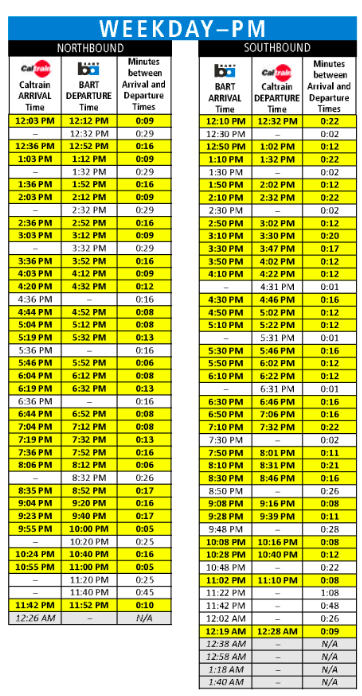In September, BART changed its schedule to be more regular throughout the day and week. The new schedule eliminates 30 minute waits on evenings and weekends, providing at least 20 minute frequency throughout the week. The tradeoff for the additional service was a reduction of frequency from to 20 minutes at some stations during peak periods. By reducing peak and increasing offpeak service, BART is supporting a more diverse, less commute-centered mix of trip types, while remaining roughly neutral in cost.
BART’s new schedule with more frequent, all-week service helped the service reach a post-pandemic ridership high on Saturday, November 5, achieving 73% of pre-pandemic ridership on a weekend with no major events.
Unfortunately, the new schedule also made the Caltrain connection at Millbrae worse. During the pandemic, as many agencies changed schedules, BART and Caltrain worked together to improve the Millbrae connection. With BART’s new schedule, the Millbrae frequency was reduced to every 20 minutes, and the connections got worse, with many waits between 25 and 30 minutes.
There may be an opportunity to improve matters. BART’s new schedule also increased service to the SFO airport in Millbrae (about a mile from Millbrae station) from eight to nine trains per hour, including six yellow line trains that only connect to Millbrae station after 9pm. If more yellow line trains could travel the extra mile to serve Millbrae, this could potentially improve the Caltrain transfer with minimal extra cost.
The yellow line trains might need to use a different platform which would be a bit more confusing for riders to navigate, but it would still be worth it to not have to wait 25 minutes or more for the transfer.
Since the BART and Caltrain brands together make up the region’s core regional rail service, and should act like an integrated system for riders, we hope that a solution can be found to improve this transfer, which accounts for about 5% of Caltrain’s overall ridership and is an important symbol of the coordination of the region’s transit system.

